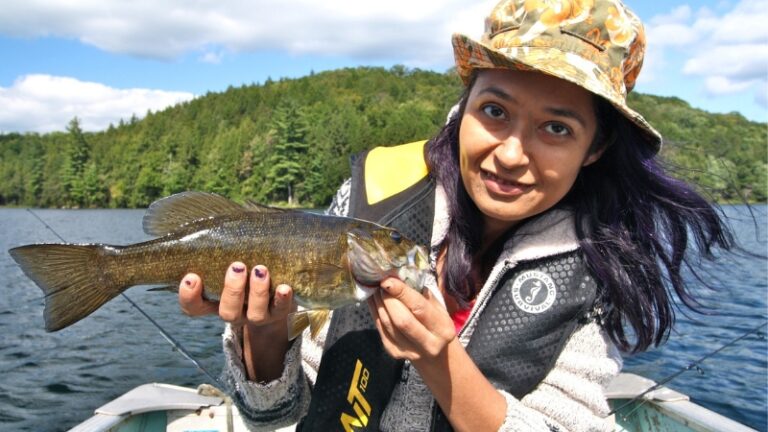Beginner’S Guide: How To Tie Fishing Line To Baitcast Reel
Today we discuss How To Tie Fishing Line To Baitcast Reel. Tying a fishing line to a bait cast reel may initially seem daunting, but fear not! We’re here to guide you through the process, step by step. So, how to tie the fishing line to a bait cast reel? It’s simpler than you might think. By following these easy instructions, you’ll have your fishing line securely attached in no time. Let’s dive in and ensure you’re fully equipped to tackle this task with confidence.
How to Tie Fishing Line to Baitcast Reel
Gearing up for Success: Fishing Line Selection
Choosing the right fishing line is crucial for a successful angling experience. There are various types of fishing lines available, including monofilament, fluorocarbon, and braided lines. Each has its own unique characteristics and advantages. Here’s a breakdown of the different options:
Monofilament Fishing Line
Monofilament fishing line is a popular choice among anglers for its versatility and affordability. It is also relatively easy to handle and knot. Monofilament lines have good knot strength and buoyancy, making them ideal for topwater fishing. However, they may have more stretch compared to other types of lines, reducing sensitivity.
Fluorocarbon Fishing Line
Fluorocarbon fishing line is known for its invisibility underwater due to its refractive index, which closely matches that of water. It offers excellent sensitivity and low stretch, allowing for better hook sets and enhanced feel. Fluorocarbon lines are more dense and sink faster, making them suitable for various fishing techniques, especially when discreet presentations are required.
Braided Fishing Line
Braided fishing line is incredibly strong and offers exceptional sensitivity. It consists of multiple strands of synthetic fibers, typically made from materials like Spectra or Dyneema. Braided lines have minimal stretch and excellent abrasion resistance. They are ideal for fishing in heavy cover and for techniques that require direct contact with the bait.
Essential Tools for Tying Fishing Line
Before diving into the specifics of tying fishing line to a baitcast reel, it is important to gather the necessary tools. Here are the essential items you’ll need:
Fishing Line
Choose the fishing line that best suits your angling needs, whether it’s monofilament, fluorocarbon, or braided line. Make sure to select the appropriate pound test for your target species and fishing conditions.
Baitcast Reel
Ensure that you have a baitcast reel properly mounted on a suitable fishing rod. The reel should be in good working condition, with a properly adjusted drag system.
Scissors or Line Cutter
A pair of sharp scissors or a line cutter is essential for trimming excess line and cutting your fishing line cleanly.
Knot Tying Tool (Optional)
While not mandatory, a knot-tying tool can make tying certain knots easier, especially if you struggle with dexterity or have limited finger mobility.
Tying the Fishing Line to the Baitcast Reel
Now that you are familiar with the different fishing line options and have assembled the necessary tools, let’s dive into the process of tying the fishing line to the bait cast reel. We’ll cover two popular knot options: the Arbor Knot and the Uni Knot.
Arbor Knot
The Arbor Knot is widely used for securing the fishing line to the spool of the bait cast reel. This knot is relatively easy to tie and provides a strong connection. Follow these steps:
- Pass the end of the fishing line through the spool’s arbor (the central hole) and leave a tag end of about 6-8 inches.
- Create a simple overhand knot around the main line with the tag end.
- Pass the tag end through the loop of the overhand knot created in the previous step.
- Tighten the knot snugly against the spool by pulling the main line and the tag end simultaneously.
- Trim any excess tag end, leaving a small tag for easy knot identification.
Uni Knot
The Uni Knot is a versatile knot that works well for tying the fishing line directly to the bait cast reel. It is known for its strength and is relatively easy to tie. Follow these steps:
- Pass the end of the fishing line through the spool’s arbor, leaving a tag end of about 6-8 inches.
- Create a loop by overlapping the main line and the tag end.
- Hold the loop with one hand and make several turns around the doubled line with the tag end.
- Pass the tag end through the loop above the turns created in the previous step.
- Moisten the knot and pull the tag end to tighten the knot carefully.
- Secure the knot by pulling the main line and the tag end simultaneously.
- Trim any excess tag end, leaving a small tag for easy knot identification.
Practice Makes Perfect
Tying a fishing line to a bait cast reel may take some practice, especially when it comes to achieving consistent knot strength and precision. It is recommended to practice tying knots before your fishing trip to build confidence in your skills. Remember to test the strength of your knots by pulling on them firmly. If any knots slip or break, re-tie them until you achieve a secure connection.
Tying a fishing line to a bait cast reel is an essential skill that every angler should master. By understanding the different types of fishing lines, gathering the necessary tools, and learning popular knot options like the Arbor Knot and Uni Knot, you’ll be well-equipped to tackle various fishing scenarios. Remember to choose the right fishing line based on your angling needs and the specific conditions you’ll be facing. With practice, you’ll become proficient in tying fishing lines to your bait cast reel, setting the stage for many successful fishing adventures.
How to spool line onto a baitcaster
Faqs for How To Tie Fishing Line To Baitcast Reel:
1. How do you tie fishing line to a baitcast reel?
To tie fishing line to a baitcast reel, follow these steps:
Start by threading the fishing line through the line guide on the baitcast reel.
Next, wrap the line around the spool of the reel at least twice to create a secure connection.
Hold the line tightly against the spool and make an overhand knot by passing the tag end of the line over and through the loop created.
Tighten the knot by pulling the tag end and mainline simultaneously.
Trim any excess line to avoid interference with the reel operation.
2. What type of knot should I use to tie the fishing line to a bait cast reel?
An excellent knot for tying fishing line to a baitcast reel is the Uni Knot or the Improved Clinch Knot. Both are reliable and strong knots that can secure the line to the reel effectively.
3. Is it necessary to lubricate the line before tying it to a baitcast reel?
No, lubricating the line before tying it to a baitcast reel is not necessary. However, it can be beneficial to apply a small amount of saliva to the knot before tightening it. This can help reduce friction and improve knot strength.
4. Should I use monofilament or braided line for a baitcast reel?
The choice between monofilament and braided line depends on personal preference and fishing conditions.
The Monofilament line is more forgiving and easier to handle, while the braided line offers greater strength and sensitivity.
Consider the type of fishing you’ll be doing and the specific requirements of your bait cast reel to make the best decision.
5. What is the recommended pound test for fishing line on a baitcast reel?
The recommended pound test for fishing line on a baitcast reel depends on various factors, such as the type of fishing, target species, and the reel’s line capacity. As a general guideline, a pound test between 10-20 phttps://fishingtask.com/best-baitcaster-line/ounds is suitable for most freshwater applications, while heavier pound tests are ideal for saltwater or larger species.
6. Can I use a different line type on my baitcast reel if it is already spooled with a different line?
Yes, you can use a different line type on your baitcast reel if it is already spooled with a different line. Start by removing the existing line from the reel, and then spool the desired line following the manufacturer’s instructions. Ensure that the new line is compatible with your bait cast reel and suitable for your fishing needs.
Final Thoughts
Tying fishing line to a baitcast reel is an essential skill for any angler. By following these simple steps, you can ensure a secure and reliable connection.
First, thread the line through the rod’s guides, ensuring it is evenly distributed. Next, tie an improved clinch knot by looping the line around itself and the reel’s spool. Pull the knot tight and trim any excess line.
Finally, test the knot’s strength by gently pulling on the line. By mastering this technique, you can confidently attach your fishing line to a baitcast reel and embark on your fishing adventures.


